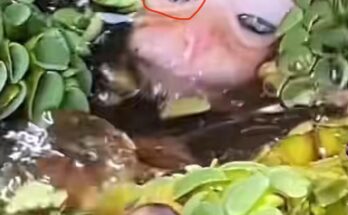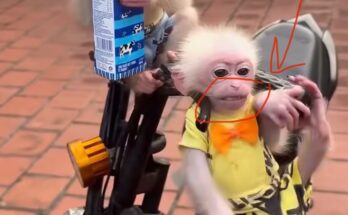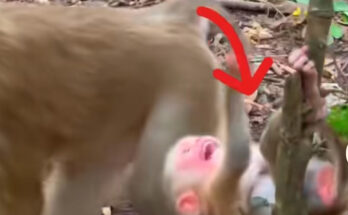In the animal kingdom, we often idealize motherhood as purely nurturing and protective. However, nature is complex—and sometimes unsettling. A recent incident involving a small monkey being severely beaten by its mother has sparked both concern and curiosity among animal behaviorists and wildlife enthusiasts. While disturbing, such behavior is not without precedent in primate societies and can be rooted in a variety of biological and environmental factors.
Understanding Primate Maternal Behavior
Most primates are known for their strong maternal bonds. Mothers carry, nurse, and protect their young for months or even years. In species like macaques, baboons, and chimpanzees, maternal care is crucial for infant survival. But in rare cases, this bond can break down, leading to aggression—even fatal attacks.
So what causes a monkey mother to turn against her own offspring?
Possible Causes of Maternal Aggression
-
Stress and Environment:
Captivity, food scarcity, or overcrowded environments can cause high levels of stress in primates. A stressed mother may not have the emotional or physical capacity to care for her young, and in extreme cases, may lash out. -
Infant Weakness or Illness:
In the wild, a mother may abandon or harm an infant that appears sick or unlikely to survive. This is thought to be an evolutionary strategy—preserving resources for healthier offspring or future reproductive chances. -
Inexperience or Trauma:
First-time mothers or those raised without proper social structures may not learn normal maternal behavior. Similarly, if a mother experienced abuse herself, she may repeat these behaviors unconsciously. -
Social Hierarchies and Aggression Transfer:
In complex primate groups, aggression and dominance struggles are common. If a mother is being bullied by higher-ranking individuals, she may displace that aggression onto a weaker target—often her infant.
Ethical and Welfare Considerations
When such incidents occur in zoos or research facilities, they raise serious ethical questions. Is the environment contributing to the mother’s behavior? Could intervention have prevented harm? Facilities must ensure enclosures mimic natural habitats and provide support for maternal animals, especially first-time mothers.
In the wild, it’s more difficult to intervene, but researchers continue to study these behaviors to better understand the triggers and develop conservation strategies that minimize harm.
A Reminder of Nature’s Complexity
While the image of a mother monkey attacking her baby is heartbreaking, it’s important to approach such incidents with a scientific lens rather than judgment. Nature is not always gentle, and animal behavior is shaped by countless variables—genetics, environment, stress, and social dynamics.
Ultimately, these rare moments challenge our assumptions and offer a deeper glimpse into the emotional and psychological lives of animals. By studying and understanding them, we not only improve animal welfare but also deepen our connection to the natural world.



